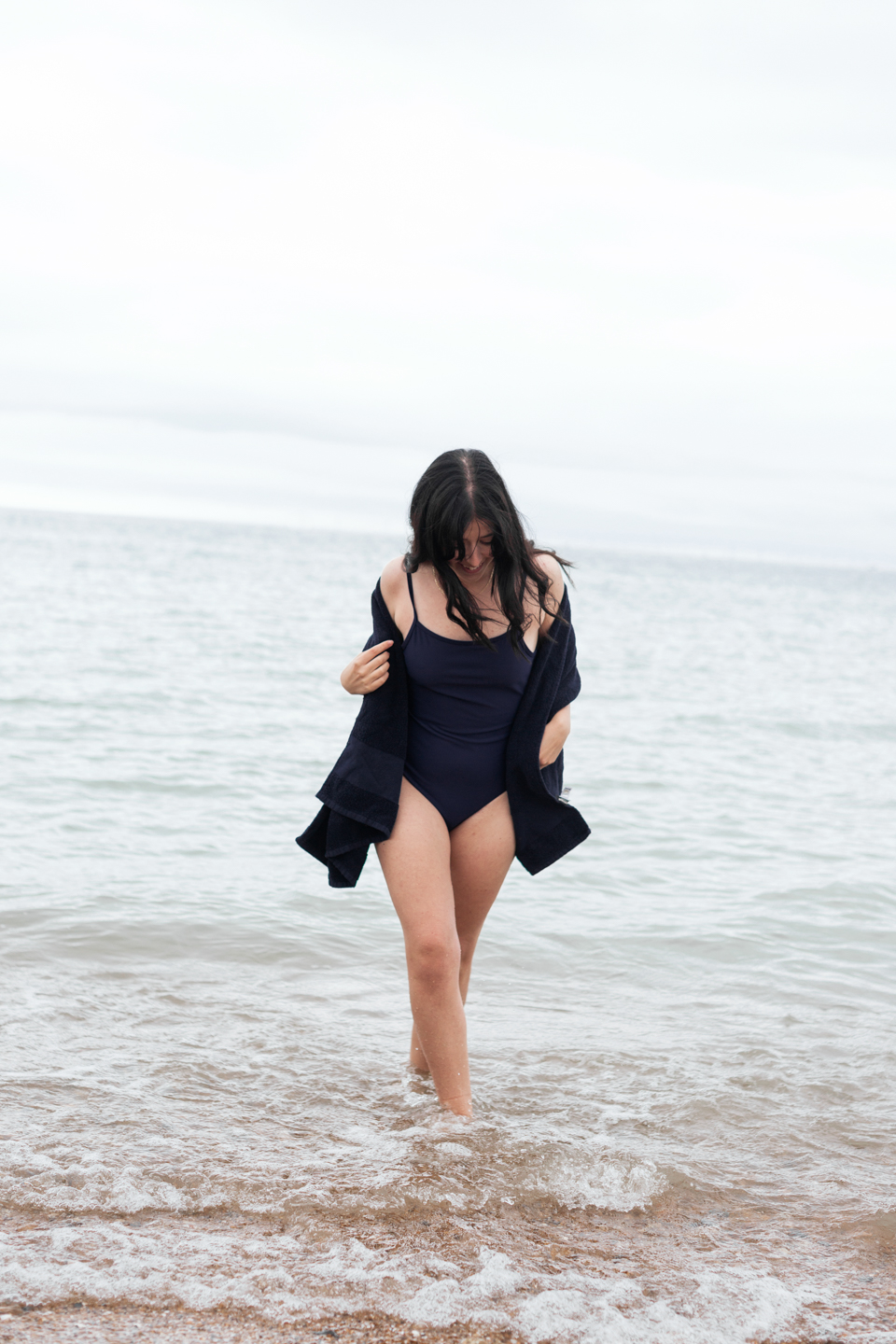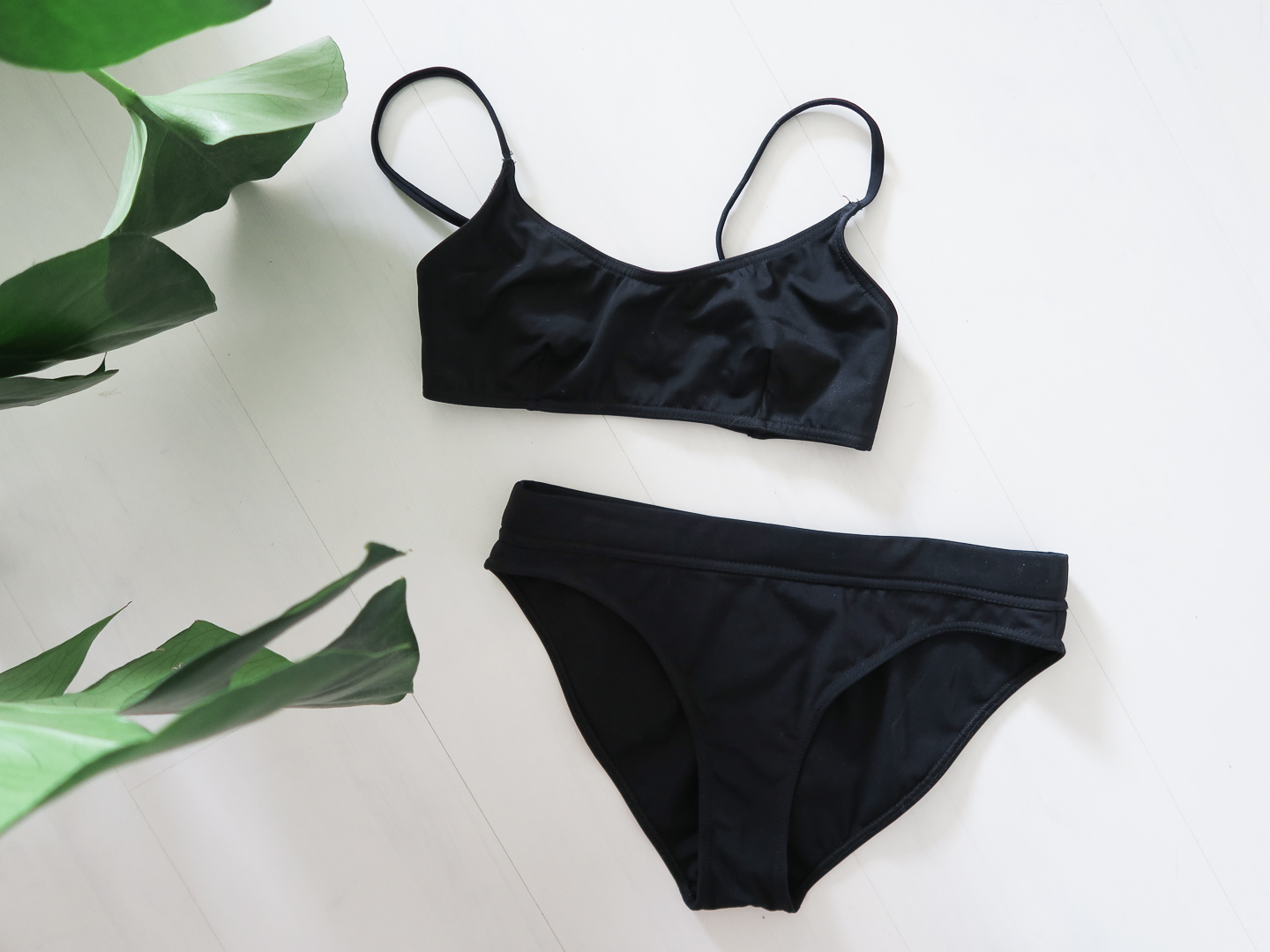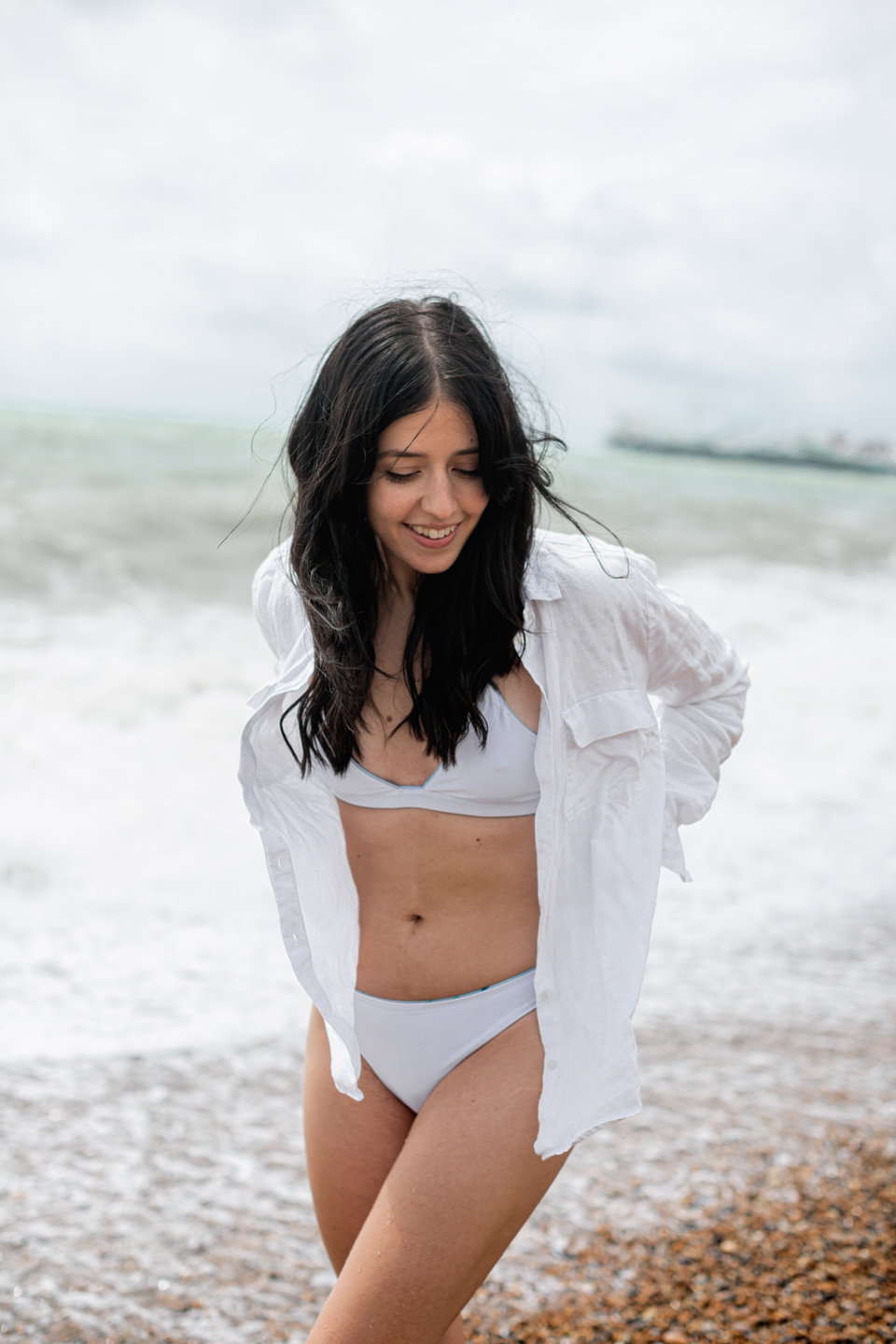

Last month I bought myself this new bikini top. It took a while to find – while there are plenty of sustainable swimwear materials around, there aren’t as many affordable brands selling in the UK!
But with a summer holiday coming up, and a recent hotel and spa stay with much swimming just past, I thought it was about time to update my swimwear collection. And so began my endeavour into finding this simple, black bikini top, which I intend to pair with my previously gifted Davy J’s briefs (pictured).
A note on sustainable fashion: it’s only sustainable if you buy pieces you’ll wear over and over again. These briefs fit really well, and suit almost any top because of their simple black design, so they were the perfect piece to keep (rather than replace altogether)
So if you’re looking to update your swimwear, here’s what you need to know about materials and the best ethical options out there.
What Is Swimwear Made Of?


I’m no textiles expert, but I am aware that most swimwear is made from fabrics that aren’t environmentally-friendly. You may think that this is unavoidable, but I’m pleased to say there are more eco-friendly options on the rise.
While my guide to sustainable fabrics goes into things a little bit, I thought it would be worth breaking out the main materials found in swimwear here, and noting the sustainable alternatives. Here’s a list of the most common textiles in swimwear, and eco options:
1. Nylon
Most modern swimsuits are made from nylon. Nylon is a good material for swimsuits as it’s strong and lightweight, but it doesn’t hold dyes well. For this reason, it is usually mixed with polyester to create patterned and colourful styles that are also chlorine resistant. You may also see lycra or spandex used for body-hugging elasticity.
The problem with this mix is threefold: first, all of these materials are synthetic. They create more demand for plastic (and crude oil), which isn’t eco.
Second, when these fabrics are washed, they release nasty microfibres that have now been found in our waterways, oceans, and fish.
And finally, this mix is almost impossible to recycle.
2. Recycled Nylon
Sustainable fashion’s answer to swimwear has come in the form of recycled nylon. You know me – I love circular fashion – and this regenerated material helps reduce the demand for new nylon, and therefore, new oil.
Recycled nylon isn’t perfect: it still generates plastic microfibres which are polluting our bodies and environment. However, it does provide the same performance as nylon, without the larger environmental impact.
3. Econyl
One of the best forms of recycled nylon is econyl. I’ve covered econyl previously: in my swimwear piece featuring Maari Porto Cervo, I explained that econyl is made from a combination of ocean plastic waste and nylon waste (from fabric recycling and elsewhere).
Econyl is essential recycled nylon (or as econyl’s manufacturers like to call it, regenerated). Not only does it save on the demand for crude oil, it also helps reduce waste plastic from polluting the environment. And it creates a nice, clean feel that is indistinguishable from virgin nylon (as far as my fingers can tell!)
4. Recycled Polyester
Recycled polyester and recycled polyamide are similar regenerated material being used in swimwear. You’re likely to see these mixed with nylon (recycled or not), lycra, or spandex to create the overall garment. Polyester doesn’t have the same strength that nylon does, but it holds dye better and therefore is used in many colourful and patterned swimsuits.
Recycled polyester swimwear is on the more affordable side, so you may see savings passed on to you when buying these. Personally, I’d recommend nylon over polyamide, but both make for good quality and less impact on the environment.
5. Repreve
Repreve is to recycled polyester as econyl is to recycled nylon. This branded recycled polyester is made from recycled polyester, as well as a percentage of recycled post-consumer plastic bottles. Again, this saves on additional waste reaching landfill or worse, nature. Repreve is a more premium material for this aspect, as seen in Mara Hoffman’s waffle-textured swimsuits.
7. Hemp & Linen
If you’re really against plastic-based materials, I’m pleased to say there are still options for you! You might be surprised to learn that natural fibres such as hemp and linen are being used to create swimwear. The best examples I’ve found include Natasha Tonić’s range, which is made from and Arkitaip’s unique crochet swimwear that’s lined with econyl.
16 of the Best Sustainable Swimwear Brands in UK
So, onto the list of UK-based eco swimwear brands! I’ve compiled this list from a good few hours of research, and highlighted where garments are made (when the information was available) as well as fabrics and styles. Happy swimming!
Berlook: Affordable recycled polyester swimwear. Get 20% off: BESMA20 Read my full review →
Casa Raki: High-end swimwear and resortwear, with swimsuits and bikinis made from Econyl.
Davy J: British-made leisure and performance swimwear created in bold colours and shapes using 100% recycled nylon.
Deakin Blue: Body sculpting ocean-waste swimwear for a range of body shapes and sizes.
Eno: Eco-friendly bikinis and swimwear for people with one breast who do not wear a prosthesis.
Finisterre: Performance swimwear and wetsuits made from recycled materials.
Hunza G*: Iconic crinkle-fabric swimwear created with a sustainable seersucker fabric.
Mara Hoffman: High end swimwear designs with cute detailing and textures made from recycled fabrics.
Marlies Dekkers: B-Corp certified swimwear brand with a vintage aesthetic.
Noma Swimwear: Sustainable children’s swimwear made from recycled fishing nets.
Organic Basics*: Good quality swimwear from my favourite basics brand. Read my full review →
Patagonia: Pretty performance swimwear designed for surfing and watersports.
Ruby Moon*: Recycled plastic gym-to-swim wear supporting women’s groups.
Stay Wild Swim: Econyl swimwear, designed and made in London.
Turana Atash: Luxury, modest swimwear in beautiful designs and colourways.
Vivida Lifestyle: Sustainable performance swimwear, wetsuits, towel ponchos and more. Read my full review →
